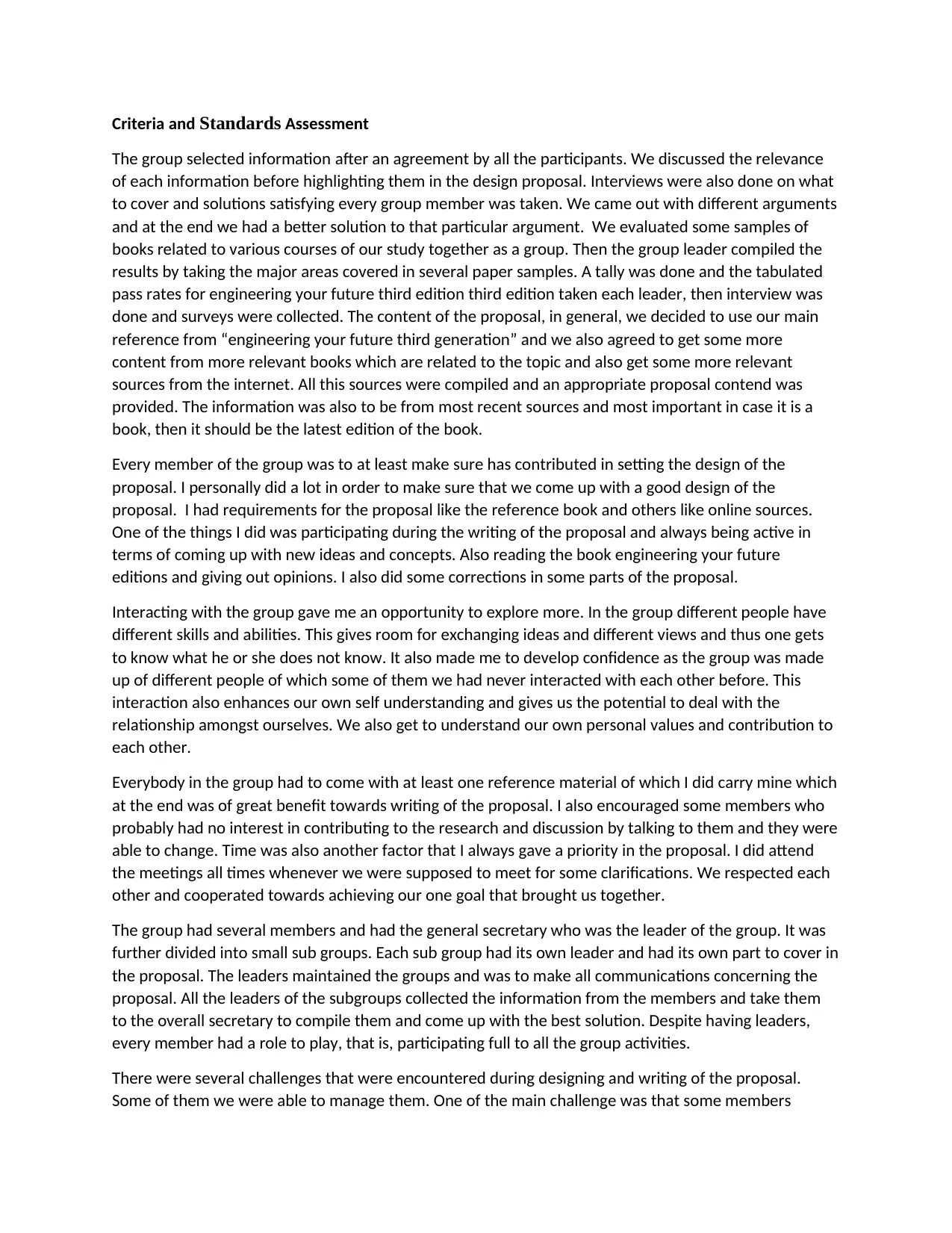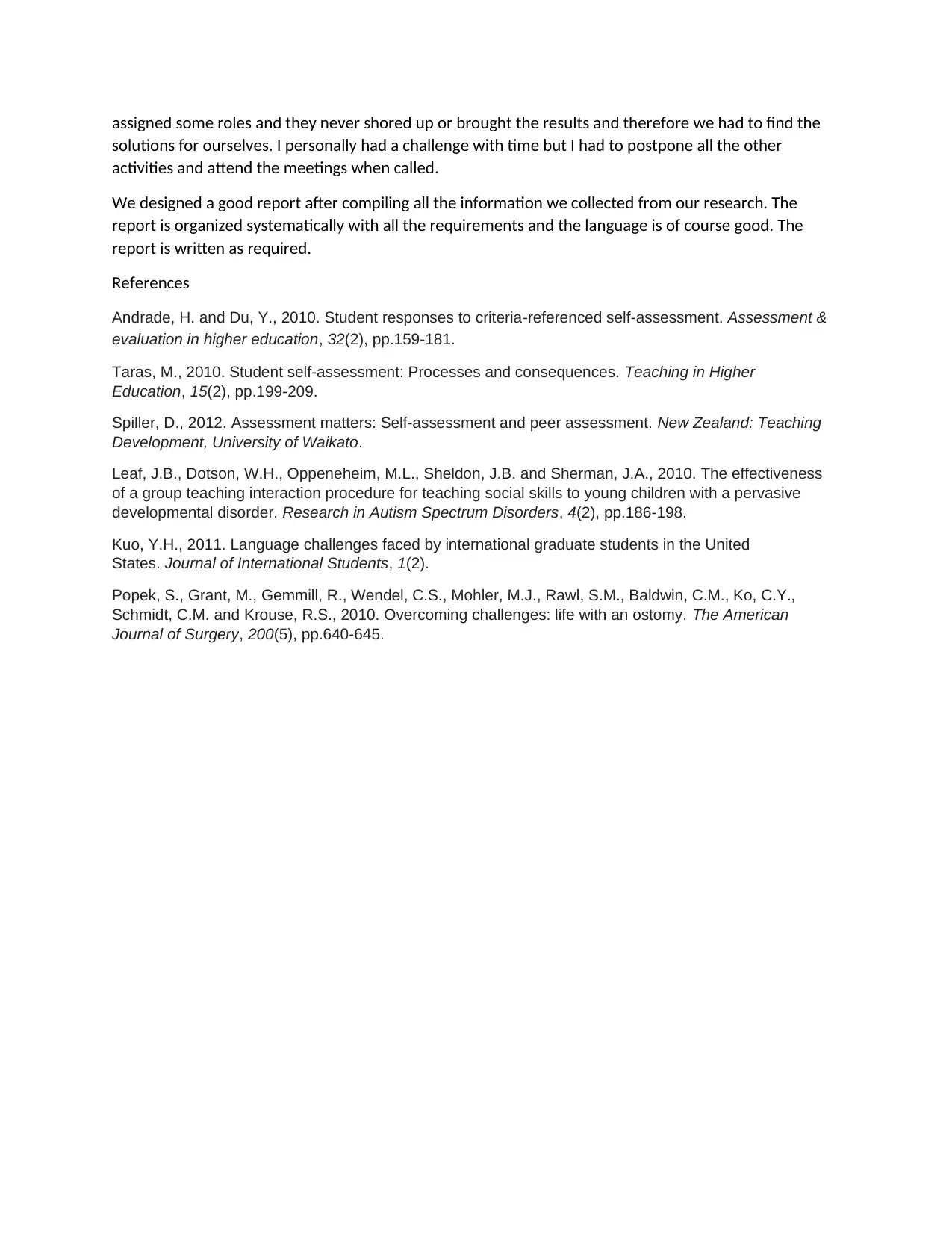Critical Self-Review of Professional Engineering Practice and Skills
VerifiedAdded on 2023/01/20
|2
|1027
|29
Report
AI Summary
This report presents a critical self-review of an engineering student's professional practice, focusing on the development of key skills and competencies as outlined by Engineers Australia. The review addresses the selection and evaluation of information used to support a design proposal, highlighting the processes of group discussion, source validation, and the use of relevant references. The student reflects on their contribution to the design proposal, detailing their active participation in idea generation, research, and the correction of proposal sections. The report also examines the student's self-management skills, including time management, active participation in meetings, and the ability to overcome challenges. The challenges encountered during the design and writing of the proposal, such as the non-performance of some team members, are also described, along with the solutions implemented. The report emphasizes the importance of teamwork, collaboration, and the application of the Engineers Australia Stage 1 Competencies, including professional use and management of information, orderly management of self and professional conduct, and effective team membership and leadership. Overall, the report provides a detailed account of the student's progress toward developing these crucial attributes within the context of the assignment.
1 out of 2







![[object Object]](/_next/static/media/star-bottom.7253800d.svg)